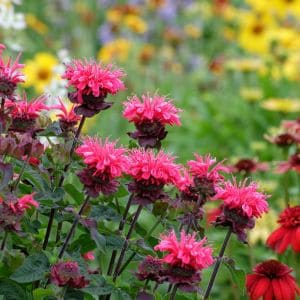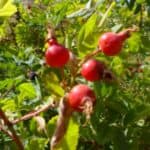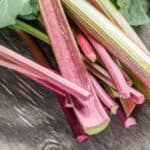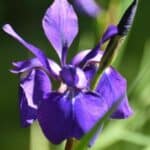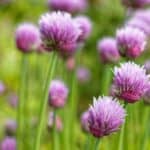Attracting pollinators to your garden is easier than you might think with bee balm. This colorful plant produces bright, tubular flowers packed with sweet nectar that draws in bees, butterflies, and hummingbirds. By planting bee balm, you create a natural food source that invites these important pollinators right to your yard.
This post may contain affiliate links.
Not only does bee balm add beauty with its vibrant blooms, but it also supports the health of local ecosystems. Pollinators help plants grow and produce fruit, so having bee balm in your garden benefits both nature and your outdoor space.
If you want to see more buzzing bees and fluttering butterflies, learning how to grow and care for bee balm is a great start. In this post, you’ll discover simple tips to keep your bee balm thriving and keep pollinators coming back season after season.
Related Article: How to Deadhead Bee Balm for Healthier, Longer Blooms
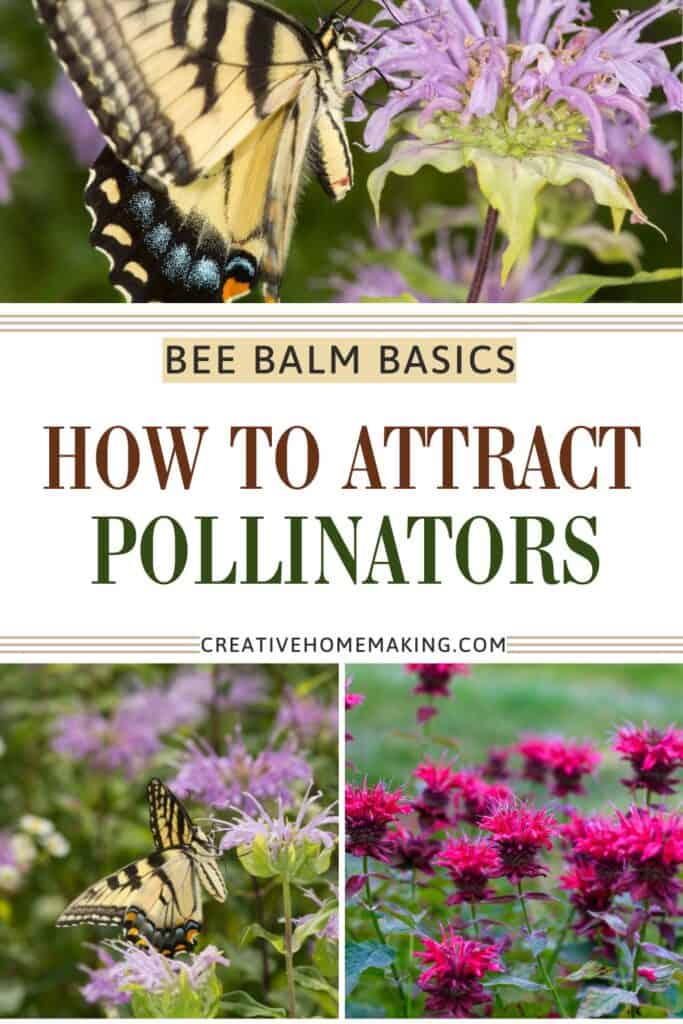
Understanding Bee Balm’s Role in Attracting Pollinators
Bee Balm is a powerful plant that supports many pollinators in your garden. Its bright flowers and sweet scent help bring in bees, butterflies, and other helpful insects. You can learn how it benefits these creatures and which pollinators are most attracted to it.
Related Article: The Best Time to Cut Back Bee Balm (and Why It Matters)
Benefits for Bees and Butterflies
Bee Balm provides a rich source of nectar, which is food for bees and butterflies. Its tubular flowers make it easy for these pollinators to reach the nectar inside. This encourages them to visit your garden often.
Related Article: Top 11 Butterfly-Friendly Plants for Your Garden
The plant’s long blooming season means pollinators can rely on it from summer into fall. This helps support their energy needs for making honey or laying eggs. Plus, by attracting these insects, Bee Balm helps pollinate other plants too.
The leaves of Bee Balm also have a scent that can help attract pollinators from a distance. This makes your garden a welcoming place for bees and butterflies.
Related Article: Top 5 Mistakes to Avoid While Growing Bee Balm for a Vibrant, Healthy Garden
Common Pollinators Drawn to Bee Balm
You’ll notice that Bee Balm attracts many types of pollinators. Most common are honeybees, bumblebees, and butterflies like monarchs and swallowtails. These species are drawn by the color and smell of the flowers.
Hummingbirds also love Bee Balm’s tubular blooms. Their long beaks fit perfectly into the flowers, allowing them to drink the nectar. This makes Bee Balm great for adding birdlife to your garden.
By planting Bee Balm, you create a spot where different pollinators come together. This diversity helps keep your garden healthy and balanced.
Related Article: Why Creeping Phlox is the Perfect Plant for Butterfly Gardens
Planting and Caring for Bee Balm to Maximize Pollinator Visits
To get the most pollinators visiting your bee balm, you need to pick the right varieties, plant them where they thrive, water and feed them properly, and keep them blooming for longer. These steps will help you create a garden that bees, butterflies, and hummingbirds love.
Related Article: How to Grow Bee Balm from Cuttings: A Step-by-Step Guide
Choosing the Right Bee Balm Varieties
Choose bee balm varieties that are native to your area, like Monarda fistulosa or Monarda didyma. Native types usually attract more local pollinators. Look for colors like red, pink, and purple because they are the most attractive to hummingbirds and bees.
Also, consider the height of the variety. Some grow tall, while others stay short. Taller plants stand out more and can attract flying pollinators from farther away.
If you want less disease risk, pick powdery mildew-resistant varieties. This will help your plants stay healthy and continue attracting visitors.
Related Article: The Best Companion Plants for Bee Balm
Optimal Planting Locations and Soil Conditions
Plant bee balm in a spot that gets six to eight hours of sunlight each day. More sun means more blooms and more pollinators.
The soil should be well-drained but rich in organic matter. You can improve poor soil by mixing in compost. Bee balm does best in soil with a pH between 6.0 and 7.0.
Space your plants about 18 to 24 inches apart. Good airflow helps reduce disease, which keeps your plants healthy and attractive.
Related Article: How to Grow Verbena for a Butterfly-Friendly Garden
Watering and Feeding Guidelines
Bee balm likes evenly moist soil but not soggy. Water your plants deeply once or twice a week, especially in dry weather.
Avoid watering from above if possible, as wet leaves can encourage powdery mildew.
Feed your bee balm with a balanced, slow-release fertilizer in spring. You can also add compost or organic mulch around the base. This provides nutrients while keeping moisture in the soil.
Too much fertilizer can cause leafy growth but fewer flowers, so don’t overdo it.
Encouraging Continuous Bloom
To keep your bee balm blooming longer, remove faded flowers regularly. This is called deadheading. It stops the plant from using energy on seed production and encourages more blooms.
Cut back the whole plant by one-third after the first bloom to stimulate a second flush of flowers.
Watch for powdery mildew. If it appears, remove affected leaves and improve air circulation by thinning the plants.
By doing this, you’ll enjoy vibrant blooms that keep pollinators visiting your garden all season.
Follow my bee balm board on Pinterest.
